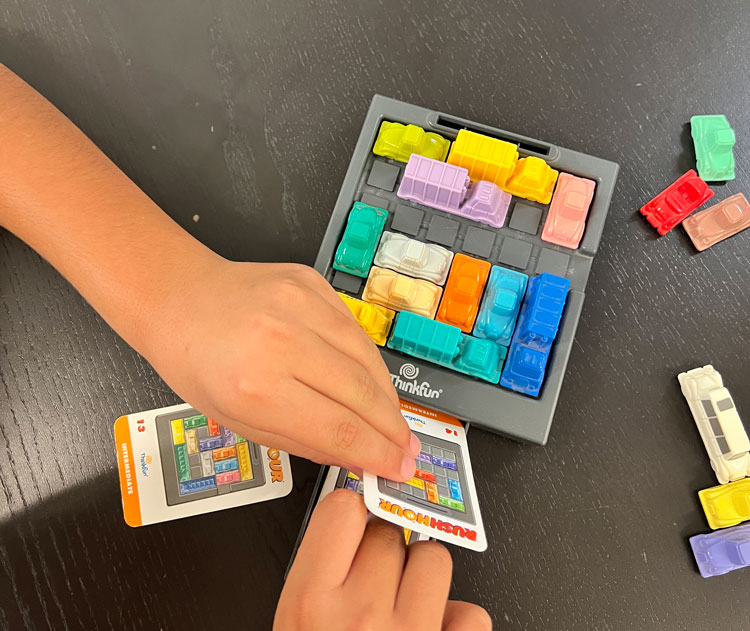With technology and innovation as the fundamental pillars of our society, education is undergoing a transformation. Slowly but surely, educational systems worldwide are adapting to the emerging needs of both the present and the future, preparing today’s youth for personal and professional challenges. In this context, STEAM education has gained considerable popularity, as it blends various disciplines and promotes more integrated and contextualized learning. Undoubtedly, computational thinking is one of the key skills at the heart of this approach and has the potential to revolutionize the way we teach and learn.
The skill of learning to learn
Computational thinking is a set of problem-solving skills that apply to any type of problem. It involves breaking down complex problems into smaller ones, recognizing patterns, abstracting details, and designing algorithms to arrive at efficient and optimal solutions. This way of thinking, typical of computer programmers, goes beyond coding—it can be applied across a wide range of fields. It teaches us to see the world as a system of interconnected processes, a perspective valuable to everyone, from scientists and engineers to artists and those in the humanities. The ability to analyze and solve problems efficiently is essential for everyone in today’s world.
On the other hand, STEAM education has emerged as a response to the need for a curriculum that aligns with the demands of the 21st century. This interdisciplinary approach combines science, technology, engineering, arts, and mathematics, preparing students for a knowledge- and innovation-based economy. Rather than isolating these subjects into separate compartments, STEAM education integrates them into real-world projects and problems. This approach fosters not just technical knowledge but also creativity, critical thinking, and collaboration skills, empowering young people to become innovators and creators of technology, rather than merely consumers.
The role of computational thinking in STEAM education
Computational thinking is central to STEAM education because it provides a solid methodology for problem-solving. By incorporating computational thinking into the curriculum, educators can help students better understand the involved disciplines and discover connections between them.
In science, it enables students to model complex systems, analyze data, and make predictions based on simulations. In biology, for instance, they can use computational models to understand ecosystem evolution or simulate molecular behavior in a virtual environment. This ability to simulate and predict natural phenomena is crucial for modern scientific research and helps make abstract concepts more accessible to students.
In technology and engineering, computational thinking is indispensable. Engineers use it to design and optimize systems, whether it’s creating safer bridges or developing software applications that tackle complex problems. Students who learn to think computationally can approach engineering projects with confidence and creativity, building prototypes, testing, and refining their designs to find the best solution.
There are also many synergies between the arts and computational thinking. Artists working with digital media—like animation, graphic design, or electronic music—use computational thinking to create their work. For example, creating a generative art piece that changes and evolves according to predefined algorithms requires a solid understanding of programming and how computers process information. In a STEAM curriculum, students can learn to use computational thinking to express their creativity in new and exciting ways.
As for mathematics, it is deeply intertwined with computational thinking. Abstraction, one of the key skills in computational thinking, is also fundamental to mathematics. When students solve math problems, they often need to break them down into simpler parts, recognize patterns, and apply algorithms. Integrating these skills into math classes can help students better understand abstract concepts and see how they apply to the real world.
Incorporating computational thinking into the classroom
To effectively integrate computational thinking into classrooms and make it the core of STEAM education, it’s essential that teachers receive proper training and that schools are equipped with the necessary resources. Learning the basics of programming, as well as becoming familiar with different educational tools for teaching computational thinking at various educational levels, is key to embedding this skill into classrooms.
Project-based learning that combines multiple disciplines is a great way to introduce computational thinking. For example, creating a video game can incorporate mathematics (to calculate scores and speeds), science (to model the physics of the game), technology (to program it), engineering (to design the game mechanics), and art (to create the game’s visuals and aesthetics). Additionally, fostering creativity in these projects and encouraging students to apply their new knowledge to real-world challenges—such as developing technological solutions to address social issues—is crucial.
Therefore, it’s important that computational thinking is regularly incorporated into the curriculum, connecting it to as many subjects as possible and also approaching it from a more technical standpoint through learning programming. In this regard, we encourage you to contact us and find out more about our Computational Thinking Books, an innovative proposal that introduces programming and computational thinking into classrooms. Thinking computationally means being prepared for the future and becoming critical, creative citizens capable of tackling any challenge and solving complex problems.

